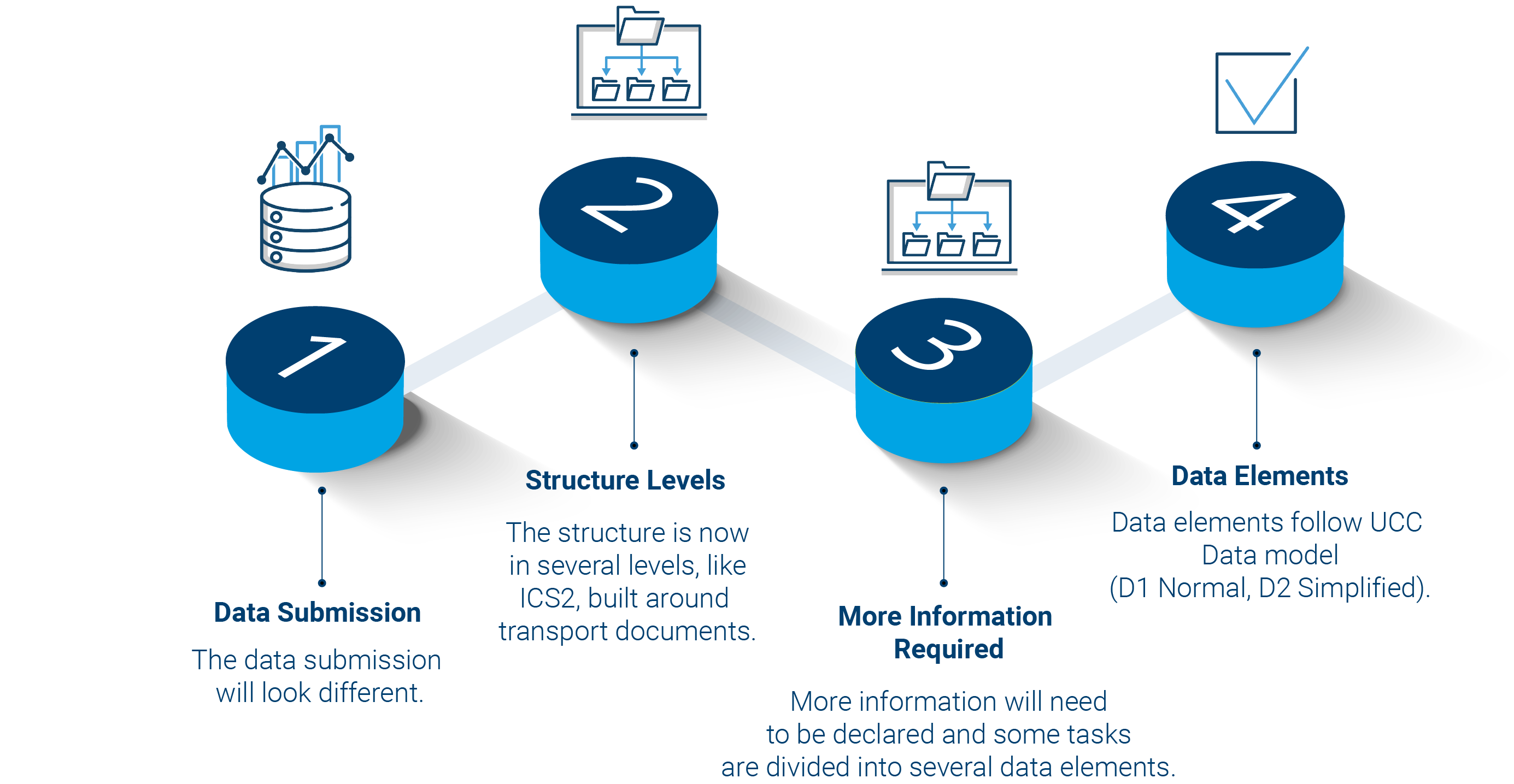What is the NCTS phase 5 all about?
In a nutshell the New Computerised Transit System (NCTS) is a digital system developed by the European Union for the management of goods moving in transit between signatory countries under the Common Transit Convention (CTC).

The Convention means that goods can move much more easily between the EU and the so-called Common Transit Countries (Norway, Iceland, Switzerland, North Macedonia, Serbia, Turkey, UK and Ukraine). In this way, the simplified rules, such as mutually recognised financial guarantees for customs transit and less controls, help to cut down on costs for businesses and provide greater flexibility determining the point of clearance into the EU.
The NCTS allows customs authorities and transport operators to submit and process transit declarations including allowing for real time monitoring and control of the transit movement. The system is designed to streamline transit procedures and reduce documentation requirements, while improving security, reducing the risk of fraud, and improving customs control. The system has been in place since 2005 and has been updated several times to improve functionality and enhance security.
NCTS Phase 5 - Why the upgrade?
It is all about helping to improve the ever-complicated world of customs procedures. The Union Customs Code (Reg. EU 2013/952 (UCC), Reg. 0J 2015/2447 (IA), Reg. EU 2015/2446 (DA) – Annex B) sets new requirements for improving and simplifying customs procedures.
In doing so new data models and requirements were introduced as well as updated processes.
In order to manage the new procedures in a manner compatible with the requirements of the Union Customs Code (UCC), the New Computerised Transit System – Phase 5, a successor to NCTS Phase 4, is being developed. This will be followed by NCTS Phase 6.

NCTS Phase 5 - The who of the upgrade?
Each Member State is responsible for deploying NCTS Phase 5 via their National Systems according to a common set of specifications.
It will affect all Economic Operators who move goods under Transit.
What of the upgrade?
The upgrade is an introduction in changes to data requirements (data, forms and codes of customs declarations).
Exchanges of information between customs authorities as well as between economic operators and customs authorities should take place, in any case, using electronic data processing techniques.
Some National Authorities may decide to not adopt all the available processes or messages allowable under NCTS Phase 5 but must be able to support the minimum processes.
NCTS Phase 5 & 6: Components
Component 1 - NCTS Phase 5
The aim of this phase is to align the NCTS system with the new UCC requirements. Except in safety and security data elements in transit customs declarations of goods that are brought into the customs territory of the Union. It covers the registration of ‘en route’ events and the alignment of information exchanges with UCC data requirements, and the upgrade and development of interfaces with other systems.
Component 2 - NCTS Phase 6
The aim of this phase is to implement the specific new requirements for safety and security data elements in transit customs declarations of goods brought into the customs territory of the Union resulting from project 17 (UCC ICS2). The scope and implementation solution will be agreed during the project initiation phase.
NCTS PHASE 5: Additional features
There are a few additional features especially for Traders.
The updated system NCTS phase 5 is very similar to today’s system, but there are a few areas that differ.

• The commodity code (HS number) must be entered to at least 6 digits.
• Ability to lodge a Transit Declaration prior to presentation of the goods, with the ability to amend before presentation. This means an additional Presentation Notification message (D4 Data Set) needs to be sent.
• The person responsible for the procedure must now state the amount of the guarantee to be reserved (the amount of duties and taxes) in the transit declaration. This was not mandatory in all countries.
• Some countries are extending the messaging to allow for checking of guarantee balance.
• Registration of incidents En-Route. For this reason, a new Office role is introduced, which is named Office of Incidents Registration (role ‘INC’).
• Introduction of a new Office role named Office of Exit for Transit to perform safety and security checks of the movement before it exits the Security Area.
• Interface with AES to support the scenario Export followed by Transit.
• Digital MRN or TAD. Instead of providing a full paper document it should be possible to present just a MRN or Barcode.
Insights & Resources for UK Customs
Stay informed with expert blogs and practical content covering customs & regulatory solutions for the UK market.



